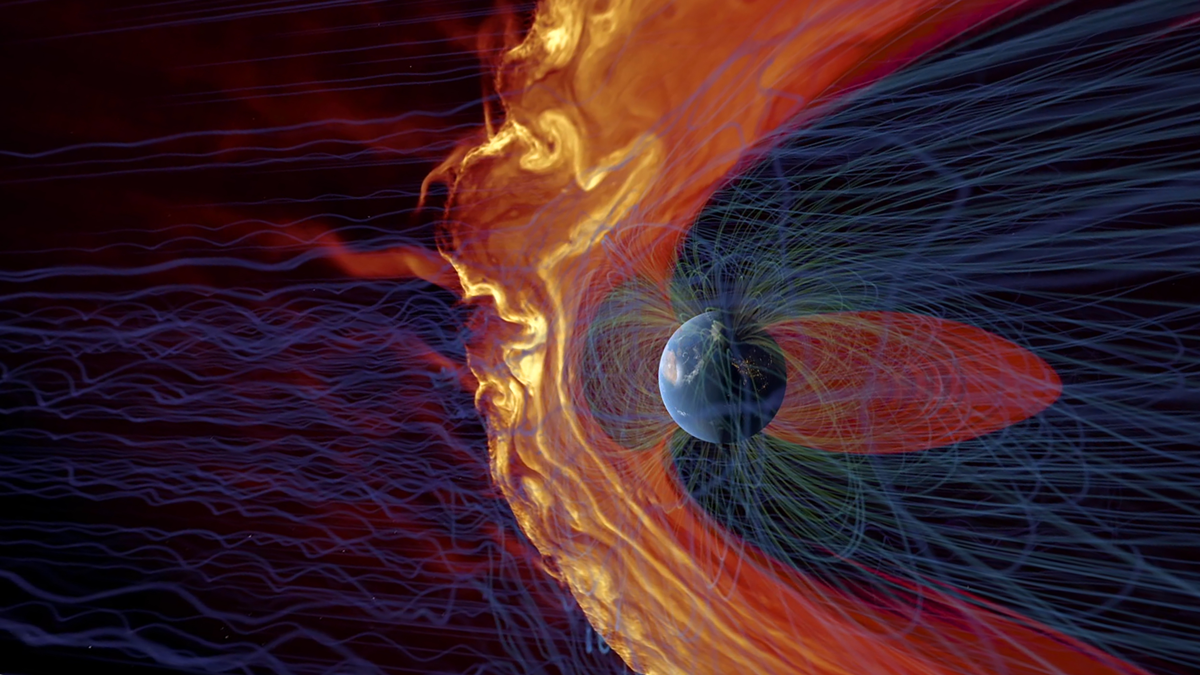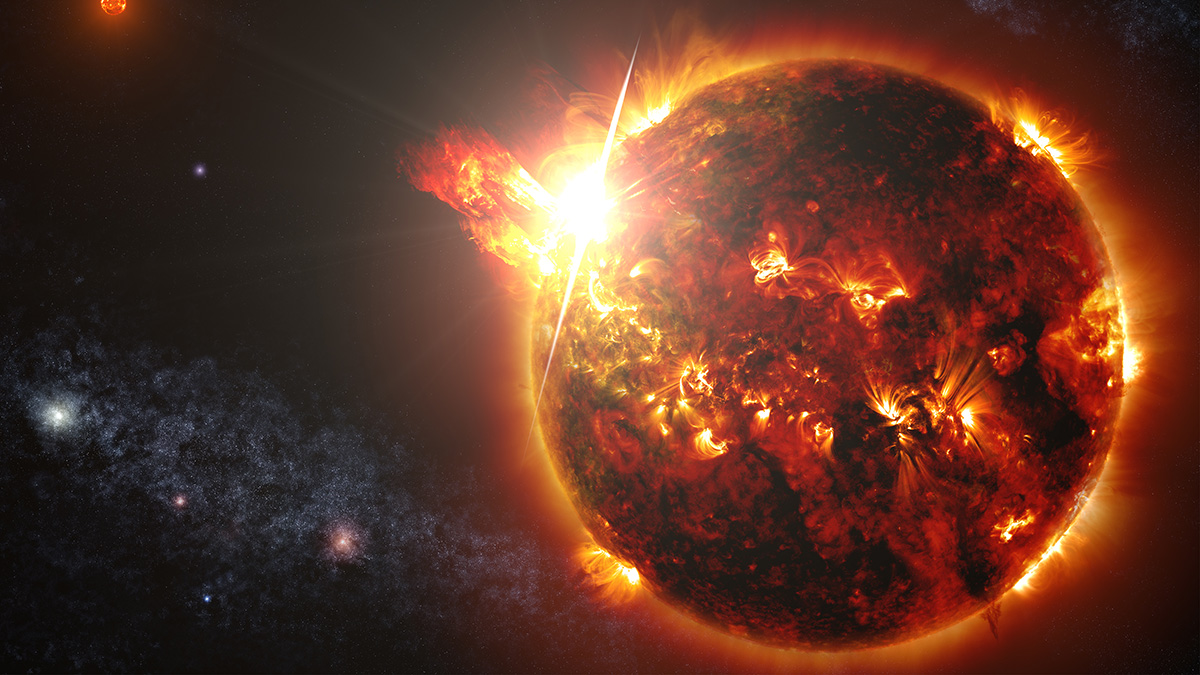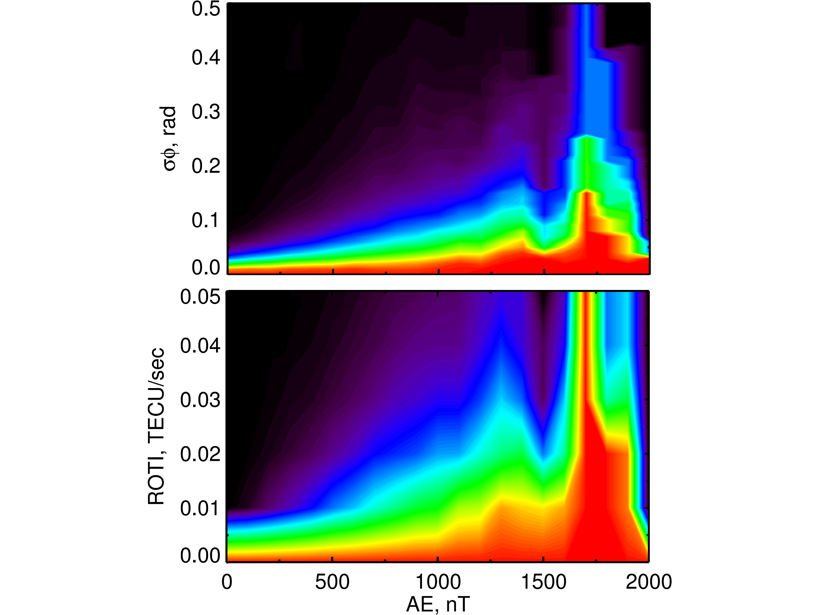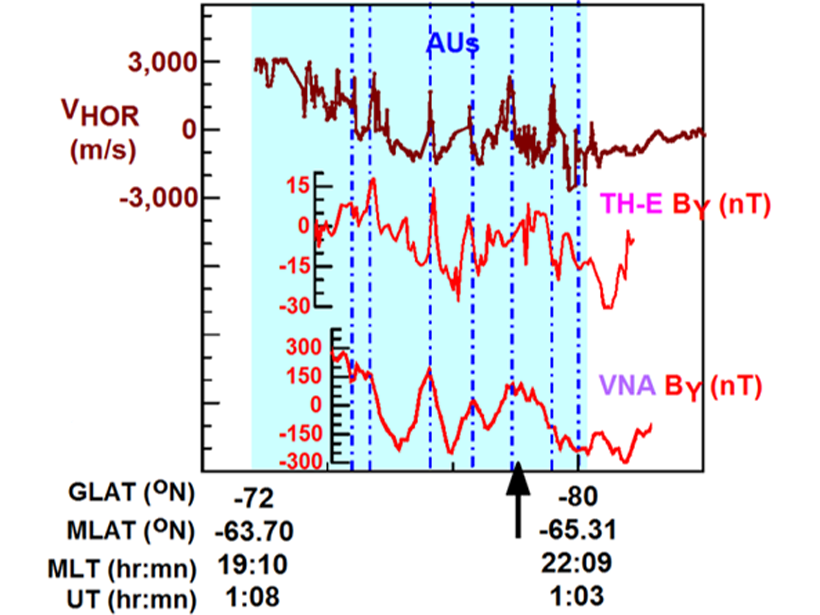Interactions between lunar gravity and the terrestrial magnetic field may cause a 90° offset from the Moon’s position in its orbit.
plasmas
How to Bend Lightning with a Laser Beam
For the first time, scientists have redirected lightning using a laser beam. And that’s just the start of what’s possible.
The International Reference Ionosphere – A Model Ionosphere
An accurate and reliable description of Earth’s ionosphere is of critical importance because of our increased reliance on satellite technology and the significant impact the ionosphere has on it.
Space Raindrops Splashing on Earth’s Magnetic Umbrella
Though not as damaging as extreme space weather events, showers of plasma jets hit Earth’s magnetic shield every day—yet we’re only beginning to understand their effects.
Shake, Rattle, and Probe
Helioseismology allows scientists to study the interior of the Sun, solve some basic physics mysteries, and forecast space weather.
A “Dam” in the Corona May Make the Solar Wind Gain Its Unusual Speeds
A new study supports the idea of a “helicity barrier” influencing the fluctuating stream of interplanetary plasma.
Coronal Dimmings Shine Light on Stellar CMEs
Coronal mass ejections from stars have eluded easy observation, so scientists are looking at what’s left behind.
First Solar Wind Plasma Observations from the Tianwen-1 Mission
Solar wind plasma data captured by the Tianwen-1 probe while in transit to Mars represent an important step toward a new era of cooperative Martian space exploration.
The Auroral E-region is a Source for Ionospheric Scintillation
Observations reveal a connection between auroral particle precipitation and scintillation, indicating that the ionospheric E-region is a key source region for phase scintillation at auroral latitudes.
Satellite Data Reveal Magnetospause K-H Waves Impact Auroras
Analysis of multiple satellite data has revealed a striking connection between K-H waves on the magnetopause, surface waves in the hot zone near the plasmapause, and auroral undulations.










